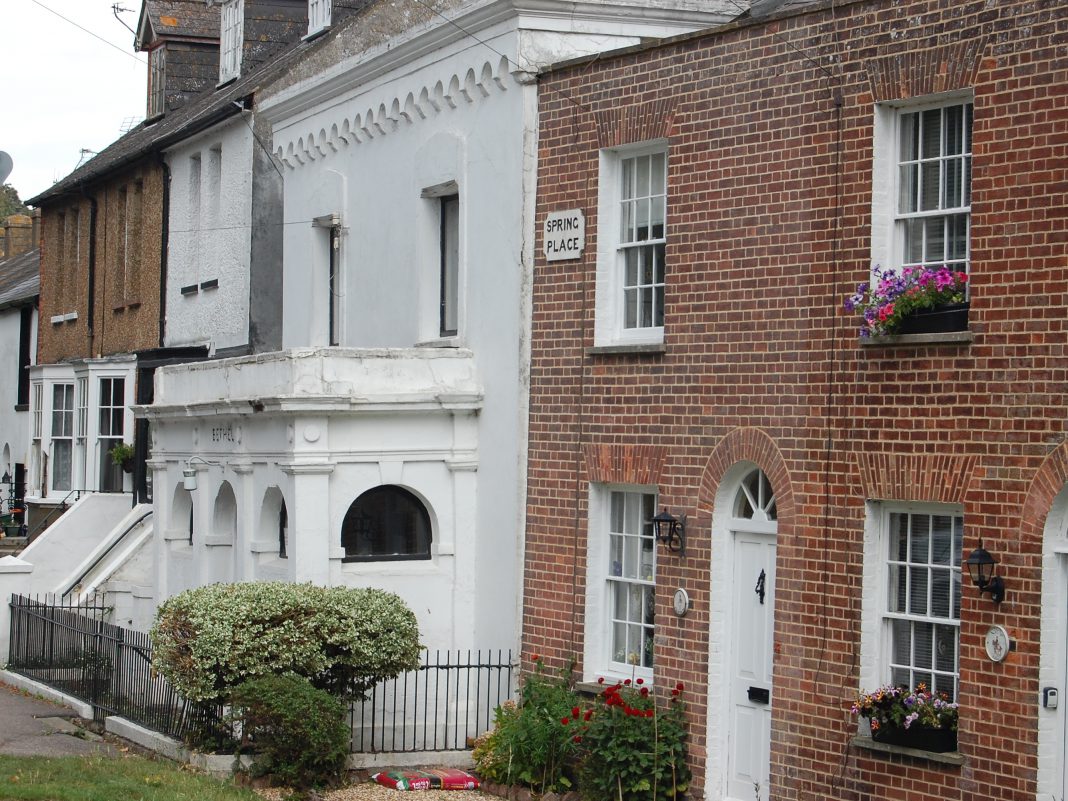Following the article in Rye News, it appears that the Bethel Chapel in Military Road is not on the register of listed buildings maintained by Historic England, although the row of adjacent houses to either side are listed.
Rother’s appraisal adopted by the district council in 2006 includes the following assessment of Military Road and the Bethel Chapel:
“On the east side of this road north of the railway the streetscape is composed of collections of small crescents and terraces of petite houses of Georgian character, constructed of brick or render, under slate roofs with dormer windows. This is an ordered architecture, relying on rhythm, repetition and uniformity to create its special character, punctuated by the originality of the Bethel Chapel, which makes a distinctive contribution to the street scene.”
Clearly the structure is of historic interest and perhaps also architectural importance. Whilst the exterior is protected to some extent by the conservation area designation and its contribution to the setting of the attached grade II listed Spring Place terrace, its interior including historic furnishings associated with its use as a place of worship, has no heritage protection whatsoever.
The Rye Conservation Society is being urged to consider what action can be taken to conserve this structure.
Image Credits: Rye News library .




It seems important to note that the front of Bethel Chapel has been altered since it was built and the Georgian style windows reduced to mere half moon slits that allow very little light to enter. A new owner should be allowed to alter this. Whilst historical preservation may be important, not every older, listed building necessitates being preserved. The assumption that anything old is worth preserving is absurd, particularly when listing a property also means listing it as it was, at the time of listing. The architecture of this building is fairly insignificant (shock horror) but its function as a community venue is significant. It does not need to be kept as a house of worship but it should be retained as a publicly accessible venue.
In order to preserve and repair historic buildings which by their nature and condition often require large capital investment the key to success is the end use. Community use not always produces sufficient capital funds with which to repair damaged historic structures. While the Kino Cinema Rye is a triumph of commercial use in a historic building that justified that building’s renovation here in a quiet residential terrace and context the best and most valuable use for this delightful building should be as a residential building: otherwise, there will not be a strong enough commercial rationale by which this building will find the funds to be restored. Give it over to residential use and it could be saved. And the neighbours can continue to enjoy their quiet enjoyment of their properties. And addressing Paul’s point above, there are coherent guidelines employed by Conservation Officer’s that best ensure how conservation is approached, and it is true that that approach is not slavish, and changes can occur, provided they are agreed by planners and conservation offices, and if pragmatism and sense rule here this sweet building can be brought again back into beneficial use, and its renovation will be an asset to the streetscape and local context in which it sits